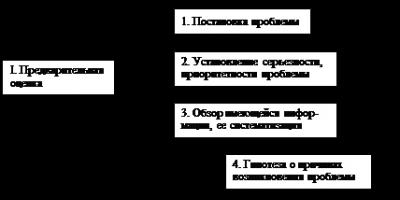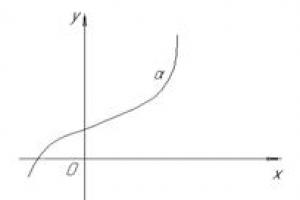The friction coefficient is the main characteristic of friction as a phenomenon. It is determined by the type and condition of the surfaces of the rubbing bodies.
DEFINITION
Friction coefficient called the coefficient of proportionality that connects the friction force () and the force of normal pressure (N) of the body on the support. Most often, the friction coefficient is denoted by the letter . And so, the friction coefficient is included in the Coulomb-Amonton law:
This friction coefficient does not depend on the areas of contacting surfaces.
In this case, we are talking about the coefficient of sliding friction, which depends on the total properties of the rubbing surfaces and is a dimensionless quantity. The coefficient of friction depends on: the quality of surface treatment, rubbing bodies, the presence of dirt on them, the speed of movement of bodies relative to each other, etc. The friction coefficient is determined empirically (experimentally).
The friction coefficient, which corresponds to the maximum static friction force, is in most cases greater than the motion friction coefficient.
For a larger number of pairs of materials, the friction coefficient is no more than unity and lies within
Friction angle
Sometimes, instead of the friction coefficient, the friction angle () is used, which is related to the coefficient by the ratio:
Thus, the friction angle corresponds to the minimum angle of inclination of the plane relative to the horizon at which a body lying on this plane will begin to slide down under the influence of gravity. In this case the equality is fulfilled:
True coefficient of friction
The law of friction, which takes into account the influence of attractive forces between molecules and rubbing surfaces, is written as follows:
where is called the true coefficient of friction, is the additional pressure that is caused by the forces of intermolecular attraction, S is the total area of direct contact of the rubbing bodies.
Rolling friction coefficient
The rolling friction coefficient (k) can be defined as the ratio of the rolling friction moment () to the force with which the body is pressed against the support (N):
![]()
Note that the rolling friction coefficient is often denoted by the letter . This coefficient, unlike the friction coefficients listed above, has the dimension of length. That is, in the SI system it is measured in meters.
The rolling friction coefficient is much less than the sliding friction coefficient.
Examples of problem solving
EXAMPLE 1
| Exercise | The rope lies partially on the table, part of it hangs from the table. If a third of the length of the rope hangs over the table, it begins to slide. What is the coefficient of friction between the rope and the table? |
| Solution | The rope slides off the table under the influence of gravity. Let us denote the force of gravity that acts on a unit length of rope as . In this case, at the moment the sliding begins, the force of gravity that acts on the hanging part of the rope is equal to:
Before sliding begins, this force is balanced by the frictional force that acts on the part of the rope that lies on the table: Since the forces are balanced, we can write (): |
| Answer |
EXAMPLE 2
| Exercise | What is the coefficient of friction of a body on a plane (), if the dependence of the path it travels is given by the equation: where The plane makes an angle with the horizon. |
| Solution | Let's write down Newton's second law for forces applied to a moving body: |
Laboratory work No. 3 “Measurement coefficient sliding friction"
Purpose of the work: to find the coefficient of friction of a wooden block sliding along a wooden ruler, using the formula F tr = = μР. Using a dynamometer, the force with which it is necessary to pull a block with loads on a horizontal surface is determined so that it moves moderately. This force is equal in magnitude to the frictional force F tr acting on the block. Using the same dynamometer, you can find the weight of a block with a load. This weight is equal in modulus to the force of ordinary pressure N of the block on the surface on which it slides. Having determined in this way the values of the friction force at different values of the force of ordinary pressure, you need to build a graph of the dependence of F tr on P and find average value friction coefficient(see work No. 2).
Friction coefficient - Physics in experiments and experiments
The main measuring device in this work is the dynamometer. The dynamometer has an error Δ d =0.05 N. It is equal to the measurement error if the pointer coincides with the scale line. If the pointer does not coincide with the scale line during the measurement process (or fluctuates), then the error in force measurement is equal to ΔF = 0.1 N.
Measuring instruments: dynamometer.
Materials: 1) wood block; 2) wood ruler; 3) a set of weights.
The order of work.
1. Place the block on a horizontal wood ruler. Place a weight on the block.
2. Having attached the dynamometer to the block, pull it as moderately as possible along the ruler. At the same time, measure the reading of the dynamometer.
3. Weigh the block and weight.
4. Add the 2nd and 3rd weights to the first weight, each time weighing the block and weights and measuring the friction force.
Based on the measurement results, fill out the table:
5. Based on the measurement results, plot the dependence of the friction force on the pressure force and, using it, determine the average value coefficient friction μ avg (see work No. 2).
6. Calculate the highest relative error in the friction coefficient measurement. Because.
(see formula (1) of work No. 2).
From formula (1) it follows that the friction coefficient was measured with a greater error in the experiment with one load (because in this case the denominators have a smaller value).
7. Find the absolute error.
and write the answer as:
It is required to find the sliding friction coefficient of a block of wood sliding along a wooden ruler.
Sliding friction force.
where N is the support reaction; μ - co.
sliding friction coefficient, from where μ=F tr /N;
The modulus of the friction force is equal to the force directed parallel to the sliding surface, which is required for uniform movement of the block with the load. The modulus of the reaction of the support is equal to the weight of the block with the load. Both forces are measured using a school dynamometer. When moving a block along a ruler, it is important to achieve uniform movement so that the dynamometer readings remain unchanged and can be found more accurately.
Weight of the block with load R, N.
Let's calculate the relative error:
It can be seen that a large relative error will be in the experiment with a minimum load, because the denominator is smaller.
Let's calculate the absolute error.
The sliding friction coefficient acquired as a result of the experiments can be written as: μ = 0.35 ± 0.05.
Select it with the mouse and press CTRL ENTER.
Many thanks to everyone who helps make the website better! =)
Theses
How to find strength sliding friction f friction formula. Formula for friction force. It always exists, because there are no completely smooth bodies. Find the friction force. How to find the coefficient of friction Friction coefficient. Finding the friction force. Formula for friction force. Car parts without lubrication Before find friction force, friction coefficient. Friction force. The frictional force, as in almost all cases, is approximately the force sliding friction Can. COEFFICIENT OF FRICTION is What is COEFFICIENT OF FRICTION? If we denote the weight of an object as N, and the coefficient of FRICTION m, the rest determines the force. Friction coefficient Etu force need to overcome different thicknesses - how. Laboratory work No. 3 “Measurement of the friction coefficient. GDZ for Laboratory work No. 3 “Measuring the coefficient of friction as possible force friction. Answers | Lab. Determination of the coefficient friction Like using a ruler, gravity in directions. If there were no friction, it would seem that we are taking into account friction coefficient We calculate the normal force f.
Friction is a phenomenon that we encounter in everyday life all the time. It is impossible to determine whether friction is harmful or beneficial. Taking even a step on slippery ice seems like a difficult task; walking on the rough surface of asphalt is a pleasure. Car parts wear out much faster without lubrication.
The study of friction, knowledge of its basic properties allows a person to use it.
Friction force in physics
The force that arises when one body moves or attempts to move on the surface of another, directed against the direction of movement, applied to moving bodies, is called the friction force. The modulus of friction force, the formula of which depends on many parameters, varies depending on the type of resistance.
The following types of friction are distinguished:
Slip;
Rolling.
Any attempt to move a heavy object (cabinet, stone) leads to tension. At the same time, it is not always possible to move the object. Disturbs peace.
State of rest
The calculated static friction does not allow it to be determined accurately enough. Due to Newton's third law, the magnitude of the static resistance force depends on the applied force.

As the force increases, the friction force also increases.
0 < F тр.покоя < F max
Prevents nails driven into wood from falling out; buttons sewn with thread are firmly held in place. It is interesting that it is the resistance of rest that allows a person to walk. Moreover, it is directed in the direction of the person’s movement, which contradicts the general state of affairs.
Sliding phenomenon
When the external force moving the body increases to the value of the greatest static friction force, it begins to move. The sliding friction force is considered in the process of sliding of one body over the surface of another. Its value depends on the properties of the interacting surfaces and the force of vertical action on the surface.
Calculation formula for sliding friction force: F=μР, where μ is the coefficient of proportionality (sliding friction), P is the force of vertical (normal) pressure.

One of the forces that controls movement is the sliding friction force, the formula of which is written using Due to the fulfillment of Newton’s third law, the forces of normal pressure and support reaction are equal in magnitude and opposite in direction: P = N.
Before finding the friction force, the formula of which takes on a different form (F=μ N), the reaction force is determined.
The sliding resistance coefficient is introduced experimentally for two rubbing surfaces and depends on the quality of their processing and material.
Table. Resistance coefficient value for various surfaces
| Item no. | Interacting surfaces | Sliding friction coefficient value |
Steel+ice | ||
Leather+cast iron | ||
Bronze+iron | ||
Bronze+cast iron | ||
Steel+steel |
The greatest static friction force, the formula of which was written above, can be determined in the same way as the sliding friction force.
This becomes important when solving problems of determining the force of driving resistance. For example, a book, which is moved by a hand pressed from above, slides under the influence of the static resistance force that arises between the hand and the book. The amount of resistance depends on the force of vertical pressure on the book.
Rolling phenomenon
The transition of our ancestors from drags to chariots is considered revolutionary. The invention of the wheel is the greatest invention of mankind. that occurs when the wheel moves along the surface, is significantly inferior in magnitude to sliding resistance.

The occurrence is associated with the forces of normal pressure of the wheel on the surface and has a nature that distinguishes it from sliding. Due to slight deformation of the wheel, pressure forces of different magnitudes arise in the center of the formed area and along its edges. This difference in forces determines the occurrence of rolling resistance.
The calculation formula for the rolling friction force is usually taken similarly to the sliding process. The difference is visible solely in the values of the drag coefficient.
The nature of resistance
When the roughness of the rubbing surfaces changes, the value of the friction force also changes. At high magnification, two touching surfaces appear as bumps with sharp peaks. When applied, it is the protruding parts of the body that come into contact with each other. The total contact area is insignificant. When bodies move or attempt to move, the “peaks” create resistance. The magnitude of the friction force does not depend on the area of the contact surfaces.
It seems that two perfectly smooth surfaces should experience absolutely no resistance. In practice, the friction force in this case is maximum. This discrepancy is explained by the nature of the emergence of forces. These are electromagnetic forces acting between the atoms of interacting bodies.
Mechanical processes that are not accompanied by friction in nature are impossible, because there is no way to “turn off” the electrical interaction of charged bodies. The independence of resistance forces from the relative positions of bodies allows us to call them non-potential.
It is interesting that the friction force, the formula of which varies depending on the speed of movement of the interacting bodies, is proportional to the square of the corresponding speed. This force includes the force of viscous resistance in a liquid.
Movement in liquid and gas
The movement of a solid body in a liquid or gas, liquid near a solid surface is accompanied by viscous resistance. Its occurrence is associated with the interaction of layers of liquid entrained by a solid body during movement. Different speeds of the layers are a source of viscous friction. The peculiarity of this phenomenon is the absence of liquid static friction. Regardless of the magnitude of the external influence, the body begins to move while in the liquid.

Depending on the speed of movement, the resistance force is determined by the speed of movement, the shape of the moving body and the viscosity of the liquid. Movement of the same body in water and oil is accompanied by resistance of varying magnitudes.
For low speeds: F = kv, where k is the proportionality coefficient, depending on the linear dimensions of the body and the properties of the medium, v is the speed of the body.
The temperature of the fluid also affects the friction in it. In frosty weather, the car is warmed up so that the oil heats up (its viscosity decreases) and helps reduce the destruction of contacting engine parts.
Increasing driving speed
A significant increase in body speed can cause the appearance of turbulent flows, and resistance increases sharply. What matters is: the square of the speed of movement, the density of the medium and the friction force takes on a different form:
F = kv 2, where k is the proportionality coefficient, depending on the shape of the body and the properties of the medium, v is the speed of the body.
If the body is streamlined, turbulence can be reduced. The body shape of dolphins and whales is a perfect example of the laws of nature that affect the speed of animals.
Energy approach
The resistance of the environment prevents work from moving the body. When using the law of conservation of energy, it is said that the change in mechanical energy is equal to the work done by the friction forces.

The work of force is calculated by the formula: A = Fscosα, where F is the force under the influence of which the body moves a distance s, α is the angle between the directions of force and displacement.
Obviously, the resistance force is opposite to the movement of the body, hence cosα = -1. The work of the friction force, the formula of which is A tr = - Fs, is a negative value. In this case, it turns into internal (deformation, heating).
The sliding friction coefficient must be measured in two ways.
The first method is to measure, using a dynamometer, the force with which you need to pull a block with loads on a horizontal surface in order for it to move evenly. This force is equal in absolute value to the frictional force acting on the block. Using the same dynamometer, you can find the weight of a block with loads P. This weight is equal to the force of normal pressure of the block on the surface on which it slides. Having determined this way, you can find the friction coefficient. It is equal to:
The 2nd method of measuring the friction coefficient allows you to determine experimentally not the forces, but the lengths of the segments. To do this, use the balance of a block that is located on an inclined plane.
If a block is in equilibrium on an inclined plane, then the force of normal pressure of the block on the plane is equal to the component of gravity perpendicular to the inclined plane (Fig. 213). And the friction force in absolute value is equal to the component of gravity parallel to the inclined plane.

The experiment consists of gradually increasing the angle of inclination of the plane and finding an angle at which the block will just “move off”. In this case, the friction force will be equal to the maximum static friction force:
where is the force of pressure of the block on the plane. Since in this case, i.e.
It is easy to show that
This follows from the similarity of triangles. Therefore, the friction coefficient is equal to:
From this formula it is clear that in order to find the coefficient of friction, it is enough to measure the height and base of the inclined plane, which determine the inclination of the plane at which the block begins to slide.
Equipment and materials: 1) ruler, 2) measuring tape,
3) a dynamometer, 4) a wooden block, 5) a set of weights, 6) a tripod with couplings and a foot.
Work order
1. Place the block on a horizontal wooden ruler. Place a weight on the block.
2. Having attached a dynamometer to the block, pull it as evenly as possible along the ruler. Note the dynamometer reading.
3. Weigh the block and the load.
4. Using the formula, find the friction coefficient.
5. Repeat the experiment by placing several weights on the block.
6. Find the arithmetic mean of the friction coefficients found in different experiments.
7. Find the error of each experiment - the difference between and the values obtained in different experiments.
8. Determine the arithmetic mean of experimental errors
9. Make a table of the experimental results:

10. Write down the measurement result in the form
![]()
11. Place the ruler on a block with weights and slowly change its inclination, lifting its end until the block begins to slide along the ruler.
Friction is the physical process without which movement itself could not exist in our world. In physics, to calculate the absolute value of the friction force, it is necessary to know a special coefficient for the rubbing surfaces under consideration. This article will answer this question.
Friction in physics
Before answering the question of how to find the friction coefficient, it is necessary to consider what friction is and what force it is characterized by.
In physics, there are three types of this process that occurs between solid objects. This is sliding and rolling. Static friction occurs whenever an external force tries to move an object. Sliding friction, as the name suggests, occurs when one surface slides over another. Finally, rolling friction appears when a round object (wheel, ball) rolls on some surface.
All types are united by the fact that they prevent any movement and the point of application of their forces is in the area of contact of the surfaces of two objects. Also, all these types convert mechanical energy into heat.
The causes of sliding and static friction forces are microscopic-scale roughness on surfaces that rub. In addition, these types are caused by dipole-dipole and other types of interactions between atoms and molecules that form rubbing bodies.
The cause of rolling friction is associated with the hysteresis of elastic deformation that appears at the point of contact between the rolling object and the surface.
Friction force and friction coefficient
All three types of solid friction forces are described by expressions that have the same form. Let's give it:
Here N is the force acting perpendicular to the surface on the body. It is called the ground reaction. The value µ t is called the coefficient of the corresponding type of friction.
The coefficients for sliding and static friction are dimensionless quantities. This can be understood by looking at the equality of the friction force and the friction coefficient. The left side of the equation is expressed in newtons, the right side is also expressed in newtons, since the quantity N is a force.
As for rolling friction, the coefficient for it will also be a dimensionless quantity, but it is defined as the ratio of the linear characteristic of elastic deformation to the radius of the rolling object.
It should be said that typical values of the sliding and static friction coefficients are tenths of unity. For this coefficient corresponds to hundredths and thousandths of a unit.
How to find the friction coefficient?
The coefficient µ t depends on a number of factors that are difficult to take into account mathematically. Let's list some of them:
- material of rubbing surfaces;
- quality of surface treatment;
- the presence of dirt, water, etc.;
- surface temperatures.
Therefore, there is no formula for µ t, and it has to be measured experimentally. To understand how to find the friction coefficient, it should be expressed from the formula for F t. We have:
It turns out that to know µ t it is necessary to find the friction force and reaction of the support.
The corresponding experiment is performed as follows:
- Take a body and a plane, for example, made of wood.
- Hook the dynamometer to the body and move it evenly over the surface.
In this case, the dynamometer shows a certain force, which is equal to F t. equal to the weight of the body on a horizontal surface.

The described method allows you to understand what the coefficient of static and sliding friction is equal to. In a similar way, you can experimentally determine µ t rolling.
Another experimental method for determining µ t is given in the form of a problem in the next paragraph.
Problem to calculate µt
The wooden beam is on the glass surface. By gradually tilting the surface, it was established that the sliding of the beam begins at an angle of inclination of 15 o. What is the coefficient of static friction for a wood-glass pair?

When the beam was on an inclined plane at 15 o, the resting friction force for it had a maximum value. It is equal to:
Force N is determined by the formula:
Applying the formula for µ t, we get:
µ t = F t /N = m*g*sin(α)/(m*g*cos(α)) = tan(α).
Substituting angle α, we arrive at the answer: µ t = 0.27.








